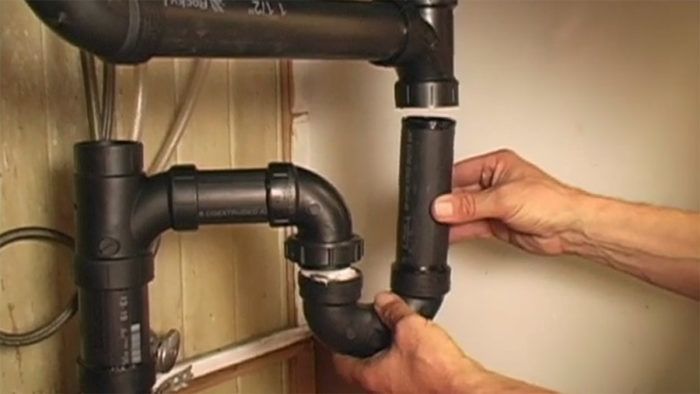Self-Taught MBA: Unclogging Business Bottlenecks
Spot bottlenecks in your operation that inhibit productivity and profitability — and unplug the blockage.

During our Monday morning meeting, I asked my administrative assistant about some documents I had requested — she had not yet found them. My second in command piped up, “Why didn’t you copy me on the email? I know where documents are too, you’re creating a bottleneck.” He was right. In fact, he said, “Copy all of us, so that everyone will see all requests, and if anyone has a ready response, he or she can act on it immediately.”
Because I always task the administrative assistant, she becomes overwhelmed with all the work she’s delegated, and the whole company slows down to about as fast as she can get things done. A bottleneck.
Spotting Bottlenecks
This exchange got me thinking about bottlenecks that I have experienced on all levels of business, my own and those I interact with. In some cases, the boss has to approve everything, and this obsession with control leads to both the slow resolution of issues and a grumpy, overwhelmed leader. Other times, it’s a slow subcontractor who has more work with the firm than he can get done, and the whole crew has to wait. Bureaucratic processes slow things down, when one person has to sign off on pay requests, or change order pricing, and they have too much on their desk to respond in real time — and everyone waits.
It’s easy to spot these obvious clogs, especially when you’re the customer, waiting and waiting. But there are less obvious bottlenecks, and these are the most insidious.
For example, you have a great trim carpenter that can knock out an average house in three days — doors, trims, and cabinets. But if you only have one house for the carpenter to do each month, then the rest of the time he helps with other trades, at which he is not as efficient. While inefficient, his wage of $25 an hour is way too much, until he’s trimming again, and then he makes the company money. A company can have several such semi-efficient employees, one that’s a great painter, but only spends 45% of his time painting, and another that’s a great crew chief, but acts as lead carpenter, despite his relative lack of skill, because you don’t have so many jobs to run.
In this way, the whole company runs less efficiently than it could, due to multiple bottlenecks, because this company needs more projects on the books so that every employee can sprint, doing what they do best, instead of stroll, killing time with odd jobs. The bottleneck at this company is: Sales.
The reverse can happen, too, if you have more jobs than you can get done in time to keep up with demand, then the bottleneck may come with your job-site production. The key to spotting your bottlenecks comes with those “if only” moments, when you say, “If only I had more time” – then this could signal that you’re the bottleneck. “If only I had more business,” maybe means it’s time to hire a full time sales representative. “If only I had more guys,” could mean you need to think seriously about ramping up production. “If I only had more money …” (Go back to the beginning of this paragraph and read it again, because business bottlenecks are often your biggest nosebleed).
Looking out for bottlenecks, and then unclogging the plug, can help you to achieve a much more productive and profitable company.
But What About Overhead?
One big reason, and a very sound reason that small businesses have bottlenecks, comes with fear of getting overextended. When there’s a lot of business, you can use the help, but you hesitate to hire employees because then the additional cost of doing business outlasts the rush and you end up struggling to make payroll. For short periods of time, it makes sense to put up with a bottleneck, and work longer hours to compensate. But there’s a pretty good basis for mid-term, if not long-term optimism in the current business cycle. By and large, economists don’t see a housing contraction, let alone recession, coming anytime soon. So, if you’re going to hire, this may be the right time to do it.
But if you’re still hesitant, consider a work inventory.
When you have identified a bottleneck, analyze the work-clog carefully. For example, if the bottleneck occurs in the office, and you find yourself working long hours at the desk, see if you can fix it by streamlining your bureaucratic processes. Find a “lean” method to get the same work done. Often this means hiring out a portion the job on a fee-for-services basis. When I found I was spending too much time bookkeeping, and this affected my getting out to job sites, where folks awaited my decisions, I realized I had created a big bottleneck. But the same folks were also waiting for checks, so the conflicting obligations got the better of me. That is, until I stopped, thought it through, and realized it was time to hire a bookkeeping service and uncork the jam. I did this without significantly hurting my overhead — and I could go back to keeping the books if the business cycle required retrenchment.
Likewise, I once realized material purchases were chewing up hours of costly tradesmen, both in wages and time away from the job site. So I hired a low wage “runner” to spend his day driving the company van, picking up materials on call. He made office deliveries, such as bid packages and invoices, too, eventually became a valuable employee, not only running errands, but controlling equipment and stock supplies, which were always a problem area with unaccounted for materials and lost tools.
In summary, there are two ways to deal with a bottleneck, add people to the task, or refine the task so that it takes less time to do it.



























